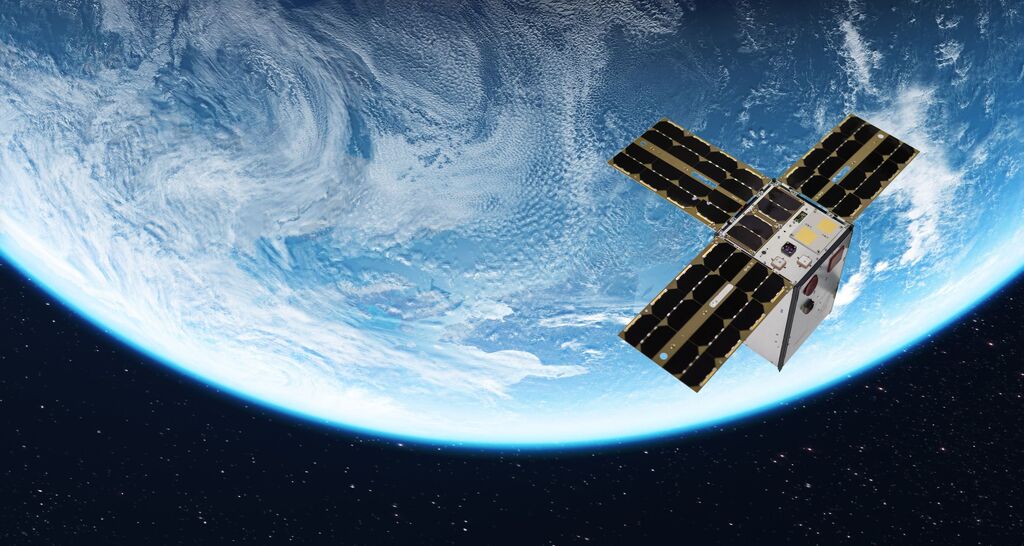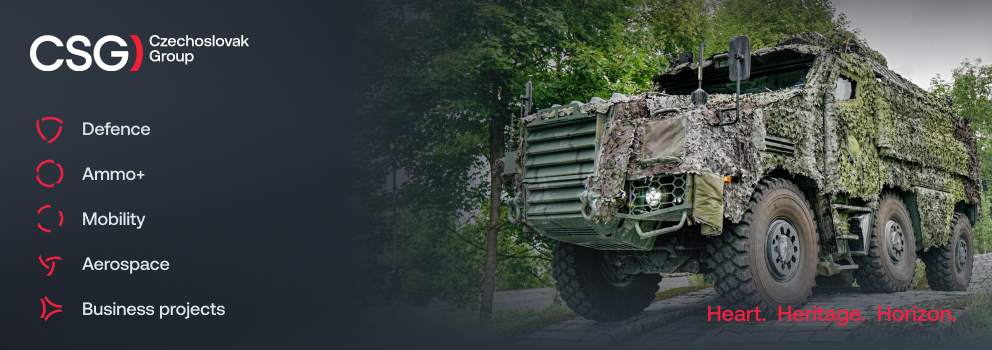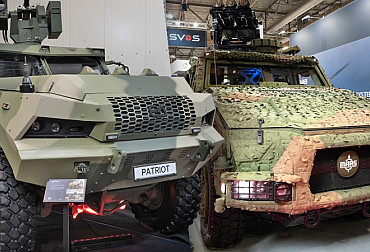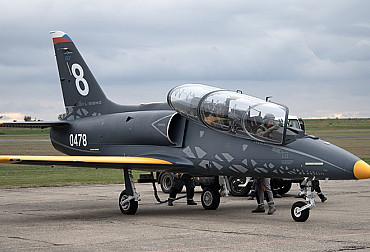SpaceX successfully launched the Czech SATurnin exploration satellite into orbit
In mid-January, the Czech satellite SATurnin-1 was carried into orbit by a Falcon 9 rocket of the US company SpaceX. The Czech Republic has never had such a large and technologically advanced satellite in space before. Starting this year, a new French commercial rocket, Ariane 6, will be used to fly the French CSO-3 observation satellite into orbit.

On 14 January, after 8 p.m., an American Falcon-9 rocket carried the most technologically advanced Czech reconnaissance satellite into space. "SATurnin-1 will further expand the capabilities of the Military Intelligence Service and its Satellite Centre, which has been under construction since 2018," said Defence Minister Jana Černochová. "The images taken by the Satellite Centre are used not only for the purposes of ensuring the defence and security of the Czech Republic or its alliance partners, but also by state administration and crisis management authorities when needed."
The 20 kg satellite has a body measuring 32 cm x 22.5 cm x 22.5 cm and a span of 87 cm when the solar panels are extended. It is equipped with a high-resolution camera for imaging the Earth. On-board data processing is handled by artificial intelligence algorithms. The first design for the satellite was created in 2022, and its assembly last September was followed by its transport to the United States in October. According to the MoD, unlike other satellites, SATurnin-1 is not dependent on foreign technology. The development of the key components was carried out on Czech territory and their integration was carried out by VZLU AEROSPACE in Letňany, Prague.
„V družici SATurnin-1 máme k dispozici unikátní domácí zdroj satelitních dat, jenž bude možné prioritně využívat pro dlouhodobý monitoring zájmových oblastí,“ oznámil ředitel Vojenského zpravodajství generálmajor Petr Bartovský. „Současně nám to do budoucna přinese finanční úspory, protože budeme méně odkázaní na komerční zahraniční poskytovatele satelitních obrazových dat.“
The ability to take images from space and use them to analyse what is happening on Earth is a security and economic necessity in today's world, according to Josef Kašpar, CEO of VZLU AEROSPACE. Moreover, SATurnin-1 will help the Czech Republic to "pursue its interests" while contributing "to the knowledge, technical and commercial development of the Czech space industry".
France will also soon send a new reconnaissance satellite into space. Unlike the Czech satellite and the US Falcon 9 rocket, it will be carried into orbit by a newly developed Ariane 6 rocket from the French company Arianespace. The CSO-3 (Composante Spatiale Optique) reconnaissance satellite will replace the older Helios 2A and Helios 2B devices as part of the European MUSIS (Multinational Space-based Imaging System for Surveillance, Reconnaissance and Observation) project. The first two French satellites, CSO-1 and CSO-2, were launched into space by Russian Soyuz rockets from the Guiana Space Centre in December 2018 and December 2020 respectively. A third satellite, CSO-3, was also initially planned to use Soyuz sometime in 2022. However, space cooperation with Moscow was suspended by the Russian invasion of Ukraine in February 2022.
"On 26 February 2025 at 13:24 local time [17:24 CET], Arianespace will launch the CSO-3 observation satellite ... using Ariane 62 [with two solid-fuel launchers], a version of the Ariane 6 rocket," the Zone Militaire website reported, referring to Arianaspace. "With this launch, which will serve the French armed forces and the needs of several partner countries, Arianespace will guarantee France and Europe autonomous access to space for the benefit of all our fellow citizens," said David Cavaillolès, Arianespace's chief executive.
The successful maiden flight of Ariane 6 last July will be followed by five more flights this year. The first of these (26 February) will also be the first commercial flight. It was originally scheduled to take place at the end of last year, but several technical shortcomings have emerged. "Of course, we have discovered some anomalies and things that need to be fixed. This has led to the postponement of the second flight to February," explained Toni Tolker-Nielsen, ESA (European Space Agency) Director for Space Transport, in early January. The six launches planned for this year have thus been reduced to five. In addition, the first Ariane 64 (with four solid-fuel launchers) will launch in 2025 and will put Amazon's first batch of Kuiper satellites into orbit. The latter has booked a total of 18 Ariane 6 launches for the Kuiper system.
During the 17th European Space Conference held in Brussels on 28 January, Arianespace managed to conclude three more agreements with European institutions. Firstly, the next commercial flight of Ariane 6 this August will put the Metop-SG-A1 meteorological satellite into orbit. This is part of the 'EUMETSAT Polar System - Second Generation' programme to provide weather and climate data, including temperature, precipitation, clouds, wind, sea ice, soil moisture or volcanic dust. Metop-SG-A1 will also carry the Sentinel-5 payload, a high-resolution spectrometry system that operates in the ultraviolet to short-wave infrared band. Sentinel-5 is part of the Copernicus programme and is used to monitor nitrogen dioxide, ozone, sulphur dioxide, methane and other trace gases in the atmosphere.
Second, an Ariane 62 rocket will carry the Copernicus Sentinel-1D Earth observation satellite into space in the second half of the year. Sentinel-1D includes a radar system and can provide images of the land and ocean surface regardless of weather and daylight. It serves a variety of purposes, such as locating oil spills at sea, observing hurricanes and providing early detection of movements on Earth. The Sentinel-1D satellite was originally scheduled for launch in September on a Vega C rocket, but the reasons for the change to Ariane 6 are not publicly known.
For the third time, the European Commission and the European Union Space Programme Agency have signed a contract to use Ariane 6 for the first pair of satellites (designated L17) of the second generation of Galileo. As early as April 2024, there were already reports of a planned launch in 2026. However, by then the French rockets will have delivered three more pairs of first-generation satellites (designated L14, L15 and L16) into orbit.
Europe's ambitions in space, however, go much further, with Ariane 6 to be used in the future to fly to the Moon. A French-Italian consortium led by Italy's Thales Alenia Space is now working on Europe's first lunar module, Argonaut. Other companies involved include OHB System AG in Germany, Thales Alenia Space in France and Thales Alenia Space in the United Kingdom. The consortium has received €862 million from ESA for the design, development and delivery of its Lunar Descent Element (LDE) flight and landing system. Argonaut will be able to land cargo for astronauts near the lunar surface, a rover, a lunar telescope or even a modular power plant. But it can also be used for stand-alone science missions. The Argonaut is said to be very robust and can survive the harsh conditions on the Moon for five years. According to ESA, the LDE will be completed in 2030, with the first mission, called ArgoNET, planned for 2031.
"Argonaut will enable Europe to make a significant contribution to international cooperation while paving the way for a sustainable human presence on the Moon. Europe is on its way to the Moon and has set the stage for European autonomy in exploration," believes Daniel Neuenschwander, ESA's Director of Manned and Unmanned Flight.
The Czech Republic, like other European countries, is developing its ambitious space programme. Thanks to SATurnin-1, it can independently monitor areas of interest while gaining experience in orbital activities. This will enable the Czech space industry to participate in European space programmes such as those preparing for a flight to the Moon. In addition, purely European capabilities contribute to deepening strategic autonomy, which reduces Europe's dependence on external powers.





















